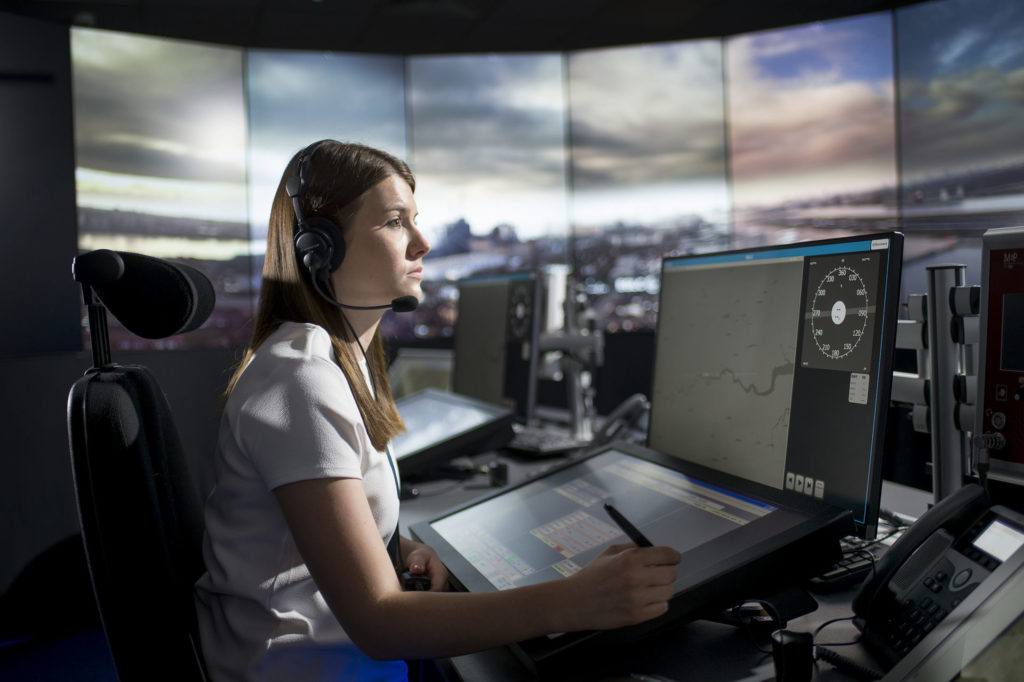So what exactly is a “Digital Air Traffic Control Tower”?
Basically it is a manned Air Traffic Controller facility that may or may not be on the airport,. It will utilise cameras, radar, radio/telephonephone communication equipment and aircraft data to enable control of airport movements. It will in essence perform the same function as the existing manned control towers, in some cases enhancing airport movement capacity.
The forerunner of this concept possibly dates back to 2009 when NATS, the UK prime ATC provider, introduced a Remote (off-airport) Control Tower Contingency Facility for Heathrow.
In the event of an evacuation or system failure of the main control tower, ATC staff will decamp to this windowless facility off the airport but in the vicinity, using radar surveillance and communication equipment along with flight data displays.
Since that time the concept has progressed using digital technology to the following extent:
- In 2015 Digital Control Tower for Ornskoldsvik Airport, Sweden introduced at Sundsvall Airport some 110 mileS away, developed by Saab Digital Air Traffic Solutions
- In December 2018, Cranfield Airport ATC, in the UK, moved from their 1930’s Control Tower to a building 400 yards away that uses digital technology (although the airport can be ultimately observed by opening the blinds!)
- In 2019, Jersey Airport introduce a fully digital contingency facility
- Other Digital Control Tower facilities are also presently operating in Norway, Ireland and Australia.
In 2017, NATS signed a 10 year contract renewal to provide the Air Traffic Control (ATC) function for London City Airport. At the same time it was announced that this ATC function, would in conjunction with Saab, be moved to the NATS Swanwick Control Centre, near Southampton some 80 miles away!
This is part of a £350 million airport development plan. The existing Control Tower Site is destined to be redeveloped and a new tower would cost up to £25m to build amazingly, the cost roughly of this digital facility. Introduction date for the digital ATC facility was originally 2019 following a year of testing, then January 2020 although this date has passed!
At London City, a 50m structure has been erected in the secured site in a car par park which will house various cameras and any other necessary equipment. It is also hoped that the use of this technology will assist ATC to increase airport movements and justify airport development.
The digital facility at Swanwick will have:
- UHD screens giving 360-degree visibility of the airport And give controllers the ability to impose radar data on these screens
- Pictures from 20 fixed high definition cameras along with 2 tilt and pan cameras for controller panning. Should one fixed camera fail, the controllers will be offered the best alternatives
- Digital feeds from London City, that will be sent down three different “pipes” independently to give resilience. Additionally, there is only a 1-second data delivery delay to controllers.
- Cybersecurity that has been tested rigorously to ensure advanced hacking protection is in place
- At Swanwick NATS engineers will utilise a PAMS remote monitoring system to maintain equipment serviceability and identify faults on the airport. Supposedly airport engineers will be able to assist with fault repairs under NATS engineer direction.
- To assist with situational awareness, aircraft sounds will also be audible to controllers at the digital facility, though not I assume the smell of aviation kerosene!
Should digital data be unavailable the controllers at the Swanwick site will, of course, have existing radio and radar displays available- as long as Swanwick does not have a catastrophic failure, which even at present will probably stop virtually all UK airport movements.
So assuming this project is successfully implanted, what happens next In the digital enhanced ATC environment?
NATS at Heathrow is currently evaluating an Augmented Reality concept. At present if the Tower “cab” is in cloud, movements are impeded Perhaps up to 25% even if visibility at ground level in unaffected. Augmented Reality will give controllers data from 20 UHD cameras enabling improved data tagging and aircraft and vehicle visual recognition. If successful then NATS will install the product at Singapore as part of a contract.
Beyond this, in the next 15-20 years, we may see a rapid increase in use of Digital Control Towers. How long until one facility controls multiple airports.
In the case of NATS, could we see Belfast City controlled from Belfast International, St Athan from Cardiff, Southampton alongside London City at Swanwick (and Farnborough?), perhaps Cardiff and Bristol combined.
As an interim could just night time ops be combined if the controller licence issues could be overcome? And what of Air Navigation Solutions providing ATC at Gatwick and Edinburgh? Could we see this German company not only go digital but combine, with perhaps Birmingham, Southend and Carlisle, and even re-locate the Digital ATC Control facility to Germany?
These ATC providers will surely be looking for significant staff cost reductions to make this worthwhile. This will lead to interesting union discussions when ATC providers want to reduce staff bills by combining airport functions and at the same time controllers hold out for more for carrying out additional tasks.
It will also be interesting if, for example, NATS failed to retain the London City contract in 2027, how would the transfer work, especially the issue of staff transferring locations?
Indeed a time of rapid change in controlling at airports, who knows if one day a duty small airfield ATCO can control the airfield from his mobile phone when at their breakfast table, in their gym or on the beach but hopefully not the pub!!
As a final thought, will a post-Corona virus aviation world accelerate this move to Digital Control Towers or slow it down due to lack of finance? Answers on a postcard……

